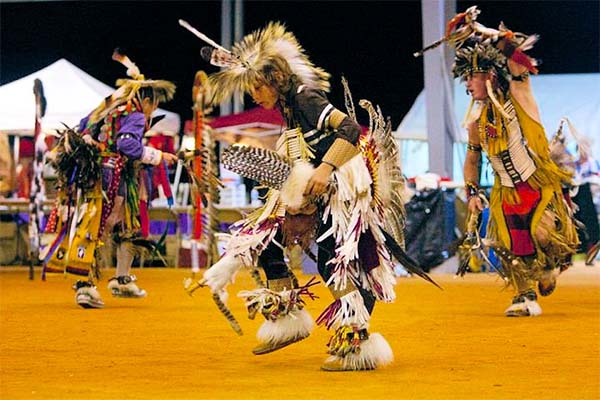
- Details
- By Native News Online Staff
WASHINGTON — November is designated American Indian and Alaska Native Heritage Month by the U.S. government. Others refer to it as Native American Heritage Month. Regardless, it is a month designated to celebrate the Indigenous peoples of this country and a time educate others about the rich heritage of Native peoples.
In preparation of this celebration month, the United States Census Bureau prepared the following information:
The first American Indian Day was celebrated in May 1916 in New York. The event culminated an effort by Red Fox James, a member of the Blackfeet Nation who rode across the nation on horseback seeking approval from 24 state governments to have a day to honor American Indians. More than seven decades later, then-President George H.W. Bush in 1990 signed a joint congressional resolution designating the month of November “National American Indian Heritage Month.” Similar proclamations have been issued every year since 1994 to recognize what is now called "American Indian and Alaska Native Heritage Month." This Facts for Features presents statistics for American Indians and Alaska Natives, one of the six major race categories defined by the U.S. Office of Management and Budget.
The following facts are possible thanks to responses to the U.S. Census Bureau’s surveys. We appreciate the public’s cooperation as we continuously measure America’s people, places and economy.
Did You Know?
6.9 million
The nation's American Indian and Alaska Native population alone or in combination with other race groups in 2019.
10.1 million
The projected American Indian and Alaska Native population alone or in combination with other race groups on July 1, 2060. They would constitute 2.5% of the total population.
324
The number of distinct federally recognized American Indian reservations in 2019, including federal reservations and off-reservation trust land.
Source: U.S. Gazetteer Files
574
The number of federally recognized Indian tribes in 2020.
Source: Bureau of Indian Affairs, 2019
142,972
The number of single-race American Indian and Alaska Native veterans of the U.S. Armed Forces in 2019.
More Stories Like This
Native News Weekly (August 25, 2024): D.C. BriefsUS Presidents in Their Own Words Concerning American Indians
Final Call for Donations as CRYP’s 2025 Toy Drive Nears the Finish Line
Star-Studded Livestream to Boost Native News Online’s Year-End Campaign
Monday Morning (December 8, 2025): Articles You May Have Missed This Past Weekend
Help us defend tribal sovereignty.
At Native News Online, our mission is rooted in telling the stories that strengthen sovereignty and uplift Indigenous voices — not just at year’s end, but every single day.
Because of your generosity last year, we were able to keep our reporters on the ground in tribal communities, at national gatherings and in the halls of Congress — covering the issues that matter most to Indian Country: sovereignty, culture, education, health and economic opportunity.
That support sustained us through a tough year in 2025. Now, as we look to the year ahead, we need your help right now to ensure warrior journalism remains strong — reporting that defends tribal sovereignty, amplifies Native truth, and holds power accountable.
 The stakes couldn't be higher. Your support keeps Native voices heard, Native stories told and Native sovereignty defended.
The stakes couldn't be higher. Your support keeps Native voices heard, Native stories told and Native sovereignty defended.
Stand with Warrior Journalism today.
Levi Rickert (Potawatomi), Editor & Publisher


